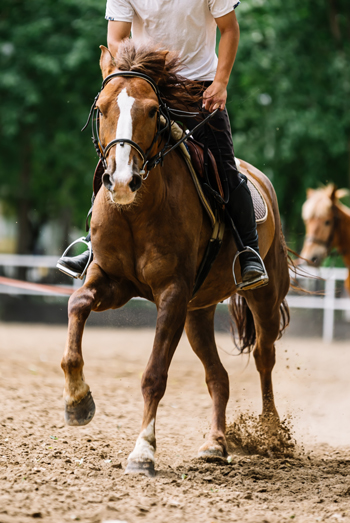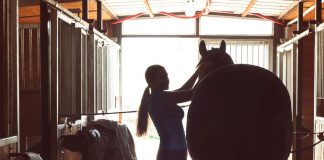
There are many important questions pertaining to equine conditioning and fitness as we all look forward to returning to work. Hilary Clayton, BVMS, Ph.D., Dipl. ACVSMR, MRCVS, served for almost 17 years as the Mary Anne McPhail Dressage Chair in Equine Sports Medicine at the Michigan State University College of Veterinary Medicine. She recently shared some cautions and considerations in a Skype interview with Equine Guelph. Clayton is a veterinarian, researcher and horsewoman. For the past 40 years she has been conducting amazing research in the areas of equine biomechanics and conditioning programs for equine athletes. She has also been a guest speaker in Equine Guelph’s online course offerings.
◆ Training is the technical preparation of the athlete (who is learning the skills and movements they will need to perform in competition).
◆ Conditioning strengthens the horse, progressively making them fit and able.
◆ The goal of conditioning is to maintain soundness while maximizing performance.
2. Considerations for horses that go from full work to just pasture turn-out?
◆ A gradual decrease from full work to less days a week, with lessening intensity, is ideal.
◆ Also, it is ideal that the horse stays in light work a day or two a week, however horses are resilient.
◆ When workload decreases, diet decreases.
◆ Do not change things suddenly.
3. How long before a horse begins to lose muscle mass and fitness? What about bones/connective tissues?
◆ Horses maintain their muscle and cardiovascular ability longer than humans.
◆ A month before horses start to lose cardiovascular capacity and muscular strength, bone and tissue adapt in accordance with the work they are doing.
◆ With no work, bones become weaker, muscles smaller and endurance decreases.
◆ The good news is the strength of bone and muscle will increase again when work resumes.
◆ Ligaments, tendons, and cartilage of horses matures by two years of age and are a bit more of an unknown.
◆ Resilience is the ability to stand up to performances.
4. When getting back to work, where do you start and how do you know how to move forward?
◆ First, address the condition of feet, saddle fit, and plan for increasing nutrition requirements.
◆ Start very gradually with walking for the first two to four weeks.
◆ Start with 10 minutes under saddle, working just three to four days in the first week.
◆ Increase the amount of walking by 10 minutes per week.
◆ By three weeks, you can be doing 30 minutes of walking per day, and start introducing 20 seconds of trotting. Then slowly introduce short canters.
◆ Performing lots of transitions between gaits is great for improving fitness
5. What are the signs of “too fast, too long and too soon!” and how do we avoid this?
◆ Back pain, limb pain, inflammation can indicate this.
◆ Monitor any changes carefully.
◆ Horses will fool you with their cardiovascular fitness improving before their strength does.
◆ To avoid injury, don’t let an energetic horse dictate how much work you will do.
6. What are some of the similarities and differences in training programs for different disciplines?
◆ The initial phase of conditioning is similar as the rider builds aerobic capacity and strengthens muscles.
◆ The first two to three months can be dedicated to general conditioning.
◆ Then start specializing depending on the intensity and endurance required for your sport.
7. What advice do you have for horse owners that are worried that leaving the horse alone is detrimental to its well-being?
◆ There are plenty of horses living outside 24/7 with little exercise that are doing just fine.
◆ Horses are far from their natural lifestyle.
◆ Maximizing turnout and forage benefit our horses welfare.
◆ They need water, food, shelter and an attentive caretaker.
Interested in learning more about developing training programs?
Equine Guelph offers a 12-week online exercise physiology course.
Equine Guelph is the horse owners’ and caregivers’ Centre at the University of Guelph in Canada. It is a unique partnership dedicated to the health and wellbeing of horses, supported and overseen by equine industry groups. Equine Guelph is the epicentre for academia, industry and government—for the good of the equine industry as a whole. For further information, visit www.equineguelph.ca.





